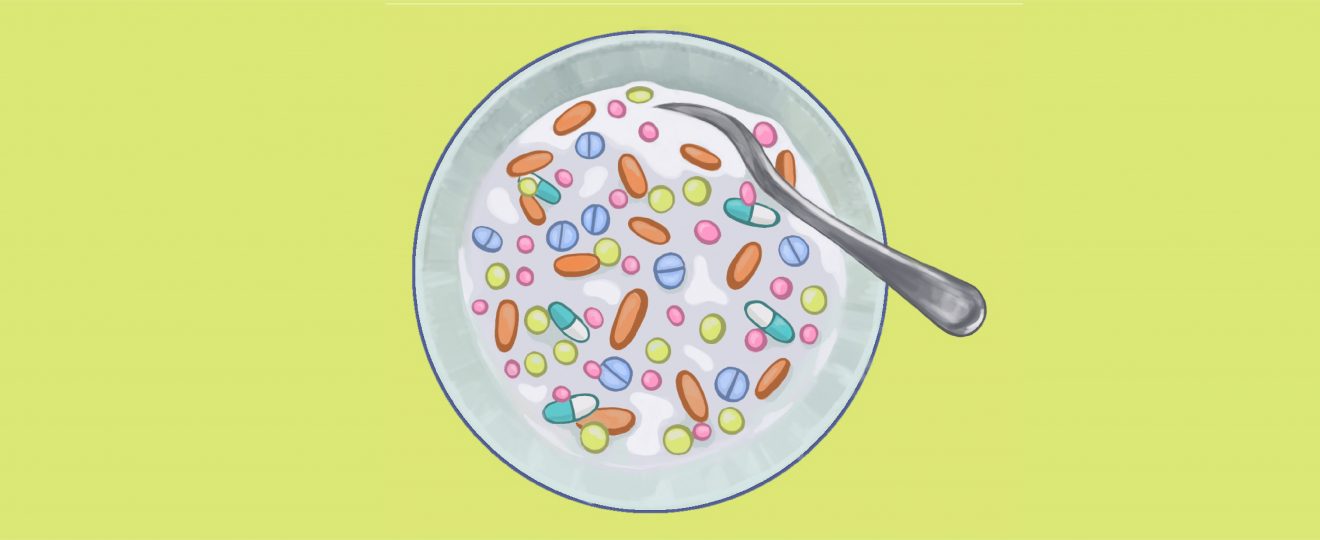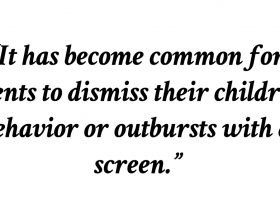I have always been an introverted person, and I have always largely lived in my own head, often getting lost in my daydreams. When I think of myself as a child, I can see a small, quiet girl that absolutely loved climbing trees, jumping in puddles, and that would routinely get in trouble because she would forget that break was over and keep swinging. I remember all of these things fondly.
But I can also remember a girl being scolded by her teacher for not hearing the bell, or not finishing her homework, or not completing a problem in class. To the extent to which said teacher thought she was justified to send me to the school psychologist without informing my parents. I also remember sitting next to my mom, when she informed my parents that I was being an “abnormal” student and that I was not learning in the way that the other students were learning. I remember sitting there, listening to her talking about my “incessant” drawing, singing, and daydreaming. I also remember the smell of coffee and cigarettes on her breath as she would lean over my shoulder in class and look at my drawing for a minute, before she took it away and confiscated my pens while we were engaged in “free activity time” – I guess she didn’t like the activity that I chose.
I have all these memories of myself at school, mainly happy memories because I never saw the things that I did as wrong and I largely have my parents to thank for that. But it is only now that I am on my way to becoming a clinical psychologist that I have started to reframe my memories and started to understand what was really going on. After meeting with my parents, my teacher recommended that I should see a child psychologist, and that my parents should have me tested for attentional deficits and learning disabilities. They themselves did not know any better, and after all, my teacher, the person tasked with my education and well-being, could be trusted, right? But really, what choice did they have but to trust her insight, since, whether they liked it or not, she was the person that saw me for most of the day.
So, as any parent would, they trusted their child’s teacher and took me to Germany to be assessed for attentional deficits and tested for learning disabilities. Sure enough, I passed all the tests with flying colours and was classified as an average, normal child. But the story did not end there, because even given the results of my tests, my teacher still believed that there was something wrong with me. She started to scrutinize every move I made, looking for mistakes in my tasks, but not in those of others. In fact, she would routinely assume that I made a mistake even when I hadn’t, forcing me, as an 8-year-old child, to prove to my teacher that I was not making a mistake and having to compare my work to the work of others for her to realize it. It got to the point where she, once again, asked my parents to get me tested because she thought that there was no way that a child like me, a child that didn’t comply with her expectations and actively “defied” her (when I was really just trying to show her that I hadn’t made a mistake), was normal and did not have some sort of problem.

Ultimately, the tests came back normal again, and I had actually improved since my last visit. The torment only stopped once we changed teachers and my new teacher never made me feel like the odd one out, and I eventually became an exemplary student.
At the time, I did not know what my teacher thought I had, nor did it ever really bother me, which, once again, I have only my parents to thank for. But I now know what was going on, and I know that my teacher was convinced that I had some form of ADD or ADHD, even though I was a healthy child, guilty only of having an active imagination.
This is why I was inspired to write about this for our issue about things unspoken of, because I have never really spoken of this period of my life. I believe that it not only merits to be discussed, but actively needs to become part of our knowledge of ADD and ADHD.
In recent years, ADD and ADHD have been the subject of explosive headlines in newspapers and magazines. Many of these headlines and their respective articles discuss dramatic increases in ADHD diagnoses amongst children in a very alarming way. Indeed, increases in ADHD diagnoses are alarming, but taking a closer look at the diagnostic processes can reveal important insights about this apparent crisis.
First of all, it is worth mentioning what is understood by ADHD and ADD, acronyms for Attentional Deficit Hyperactivity Disorder and Attentional Deficit Disorder respectively. On average, these neurodevelopmental disorders are diagnosed at age 7, but symptoms typically appear between 3 to 6 years of age. Common symptoms include: Trouble concentrating, difficulty staying organized, being forgetful about completing tasks, and difficulty staying still. However, many of these behavioural patterns are typical of children, which makes it very difficult to distinguish whether they are related to ADHD or not.
Globally, the highest regional prevalence was found in North America (4.48%), followed by northern Europe (1.95%). Asia and Australia (0.95%) and western Europe (0.7%) had the lowest pooled regional prevalence. In all regions, ADHD medication use in 3-12-year olds has increased over time and, while it still seems to be rising in North America, the rate of prescription in the United Kingdom reached a plateau in 2008. However, multiple studies have shown that there might be confounding factors influencing the rise of ADHD diagnoses, especially in context of diagnoses that use the DSM-5.
There are two major resources that are used by psychologists and psychiatrists to identify disorders and mental illnesses: The Diagnostic and Statistical Manual of Mental Disorders (DSM) and the International Classification of Diseases (ICD). Both guidelines provide different criteria of diagnosis when it comes to ADHD; the main difference being that the DSM-5 criteria tend to be wider and allow for more individuals to fall within the criteria required for diagnosis.
Importantly, Willcutt (2012), who looked at how global ADHD prevalence had changed over the past 30 years, showed that in cases where ADHD was defined according to strict clinical criteria, ADHD prevalence had remained virtually unchanged in 30 years. What did however make a difference to prevalence estimates was who reported the child’s status.
When a teacher’s report was used, ADHD prevalence and diagnoses were on average 5.47% higher than best-estimates based on clinical criteria. This also coincided with the finding that studies using the ICD guidelines reported 4.09% lower prevalence of ADHD than studies using DSM-5.
So, the problem seems to be two-fold: teachers and DSM-5 guidelines. It is not the number of children that are (by strict clinical guidelines) being diagnosed with ADHD that is increasing but rather the number of children being “identified” by their teachers as “abnormal” children that is increasing. Indeed, the importance and power of perceived classroom behaviour is reflected in the DSM-5 ADHD diagnostic criteria.
In new modifications of the DSM-5, the definition of ADHD has changed from the “onset of symptoms causing impairment” to the “onset of symptoms”. This means that under this new definition, a child can be reported and recommended for psychological treatment under the mere “presentation” of ADHD rather than the actual identification of behaviour characteristic of ADHD subtypes that could impair the child’s ability to function normally from day to day. Here are a couple of examples of Inattention and hyperactivity behaviours that suffice to diagnose a child with ADHD under DSM-5 criteria:
1: Often fails to give close attention to details or makes mistakes in schoolwork, or other activities.
2: Difficulty sustaining attention in tasks.
3: Often does not follow through on instructions and fails to finish schoolwork, chores. (Not due to oppositional behaviour or failure to understand instructions).
4: Often easily distracted by stimuli unrelated to the subject or activity being dealt with.
5: Often runs about or climbs excessively in situations in which it is inappropriate.
6: Has difficulty playing or engaging in leisure activities quietly.
Sound familiar? They sure sound familiar to me.
So if we return to the story that I described at the beginning of this piece, the things that I simply enjoyed doing would have nowadays been counted as “presentation” of ADHD symptoms, and would likely have resulted in a positive diagnosis had I been examined under recent liberal DSM-5 criteria. A positive diagnosis would have resulted in my being prescribed ADHD medication for simply forgetting to go back to class because I was having fun on the playground.
It is nowadays enough if a parent and a teacher identify “inappropriate” or “abnormal” behaviour in the child, since those are the main contributions used for diagnosis.
The real question that needs to be asked here is: how do, both teachers and parents, define appropriate behaviour? Where is the line drawn when evaluating something that is considered normal, childhood-specific behaviour, as opposed to behavioural patterns possibly indicative of attentional deficit disorders?
Recently, there has been a lot of debate about the introduction of 4-day working weeks since they have demonstrated a positive impact on the mental and physical well-being of employees. The finding that reducing shifts and shortening working weeks (i.e. not requiring people to sit at a desk and consistently focus for +40h) actually increased productivity was of special interest to the industry. These studies had been conducted in light of increasing mental health illnesses and disorders being diagnosed among workforces.
So, if adults suffer as a result of having to remain still and produce a constant stream of work, how can we possibly expect this from children?
Childhood is filled with imagination and creativity, and is characterized by impulses to explore as these are essential to a normal and healthy neuronal development. A child needs to be able to discover, run, and climb for more than the hour allocated for break time in schools. No individual should be expected to sit and focus for 7h a day, and, especially, children should not be scolded and over-medicalized for failing to fight and inhibit the very impulses that make them a child.
I would like to conclude this piece by saying that ADD and ADHD are serious disorders, with abundant empirical and clinical evidence supporting their existence and how they affect the lives of the individuals clinically diagnosed with them, and should always be taken seriously if clinically diagnosed. I am merely advising for a more cautious and case-by-case approach to diagnostic processes, to avoid over-medicalizing otherwise normal children, resulting in excessive medication intake that can be harmful to children if it is not strictly clinically necessary.
Art by Tia Merotto




